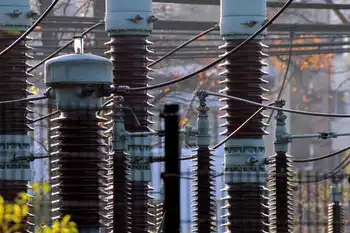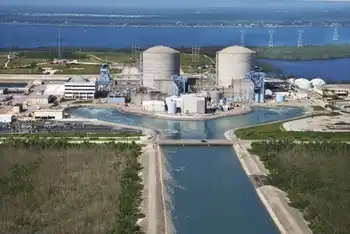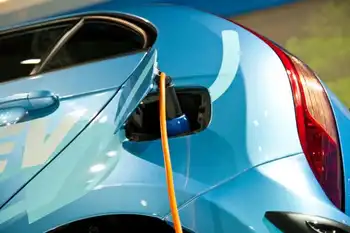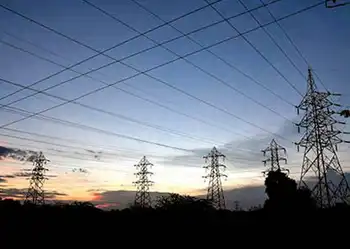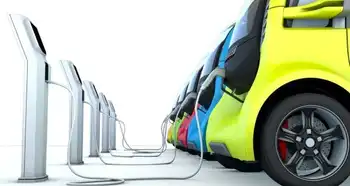Poor nations struggle with CO2 targets
By Reuters
NFPA 70e Training
Our customized live online or in‑person group training can be delivered to your staff at your location.

- Live Online
- 6 hours Instructor-led
- Group Training Available
China, India, South Korea and other emerging economic powers have announced a series of measures this year to make their economies greener and limit the increase of carbon dioxide emissions from their farms, forests and factories.
The question is whether these domestic steps are enough to seal a new global climate deal, prompt rich nations to toughen their emissions reduction pledges and lead to billions in annual financing to help poorer countries fight global warming.
The measures, focusing on renewable energy and energy efficiency, have drawn international praise and helped strengthen the hand of developing nations in talks to try to agree on a replacement to the 1997 Kyoto Protocol.
The U.N. hopes those talks will culminate in December in the Danish city of Copenhagen.
But some rich nations want more. Some in the U.S. Congress say China, now the world's top greenhouse gas polluter, and other big developing nations, must agree to binding emissions curbs. It comes down to trust and accountability.
U.S. Sen. John Kerry, who heads the Senate Foreign Relations Committee that will help to craft U.S. climate legislation, was encouraged by China's climate moves.
"I'm confident that China is prepared to take some steps that will be meaningful," Kerry told reporters, in advance of a flurry of global climate gatherings in the United States.
"I think the crucial question is, can we together, America and China, forge a partnership that's capable of acting boldly enough to prevent a climate catastrophe?" Kerry said.
China said it would unveil new plans to tackle global warming during a U.N. meeting later this month.
The U.N.'s top climate change official says it is not the time to be asking poorer nations to take on binding cuts.
"I'd say get real, quite honestly. We know that the bulk of greenhouse gases in the atmosphere are there because of industrialized countries and that's why industrialized countries have to take responsibility and act first," said Yvo de Boer, head of the U.N.'s Climate Change Secretariat.
"China is setting targets already. It is setting targets for industrial energy efficiency, for renewable energy, for buildings efficiency, for sustainable cities," he told Reuters.
He also said it was "nonsense" to ask India, the world's fourth-largest emitter, to reduce its emissions at the same time as it fights poverty with increased development.
The Kyoto Protocol, whose first phase ends in 2012, requires only rich nations to limit greenhouse emissions.
The Copenhagen talks aim to draw up the outlines of an agreement that brings all nations, plus aviation and shipping, into the fight against climate change.
Without domestic efforts, there is no prospect for an effective global deal, Elliot Diringer of the Washington-based Pew Center on Global Climate Change, said by telephone.
"How serious the initiatives are and what they could actually deliver remain to be seen, but they certainly create a more positive momentum going into Copenhagen."
A major concern is the pace of emissions growth from the developing world, which is set to jump over the next 20 to 30 years. India said this month its greenhouse gas emissions could double or more than triple to 7.3 billion tonnes by 2031.
China's emissions are also expected to soar and a Beijing energy think-tank said this week China needs huge flows of clean technology investment to maintain hope of keeping emissions below levels that could help push the planet deep into dangerous global warming.
"In the short run, the developing nations are sitting ducks and they can do nothing to stop global warming," said climate policy expert Graciela Chichilnisky of Columbia University.
"In the long run... developing nations are going to have the global warming issue by the tail."
How efforts to curb emissions will be funded has been a major sticking point in talks leading up to Copenhagen, with developing nations insisting the rich world should meet most of the cost of tackling a problem they caused in the first place.
Developing countries must use their pledged actions to try to win the best possible deal in Copenhagen, said Kim Carstensen, head of conservation group WWF's Global Climate Initiative.
"Most of what we see at the moment coming from these countries is what they intended to do in any case, funding or no funding," he said.
Instead, domestic steps should be part of the grand climate bargain to try to win the best possible funding for climate change mitigation and adaptation programs in poorer countries and the transfer of clean-energy technology.
"What we lack is some kind of agreement of how that translates into something international," he said of domestic steps.
For some nations, though, backing away from insisting on emissions targets is just too hard.
Any steps by big developing nations to curb emissions were positive and would help their negotiating positions, said Peter Backlund, a former science adviser in the Clinton White House.
"But there's still a kind of a superficial level where the line that's got to get passed to really make a huge difference is about setting a target," said Backlund, now director of research relations at the National Center for Atmospheric Research in Boulder, Colorado.
"Even though the steps themselves might be more consequential than a target, it's just a kind of superficial marker that's been established."






